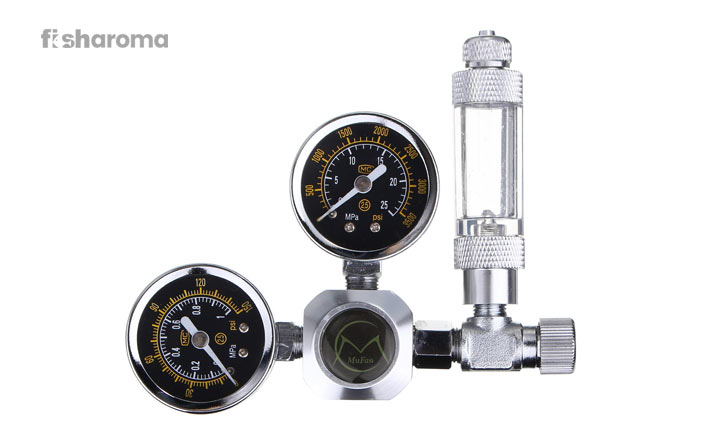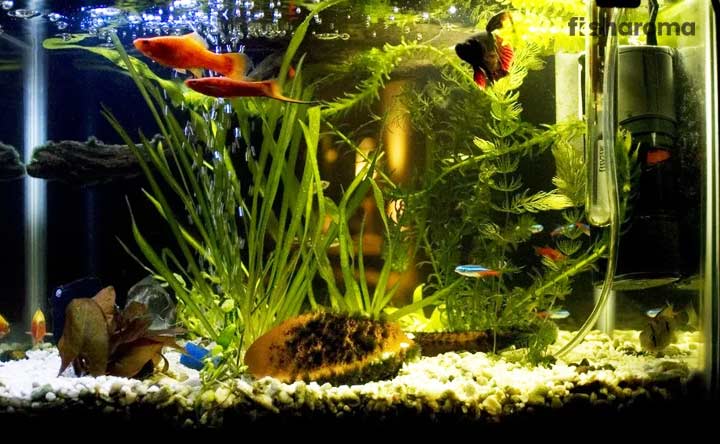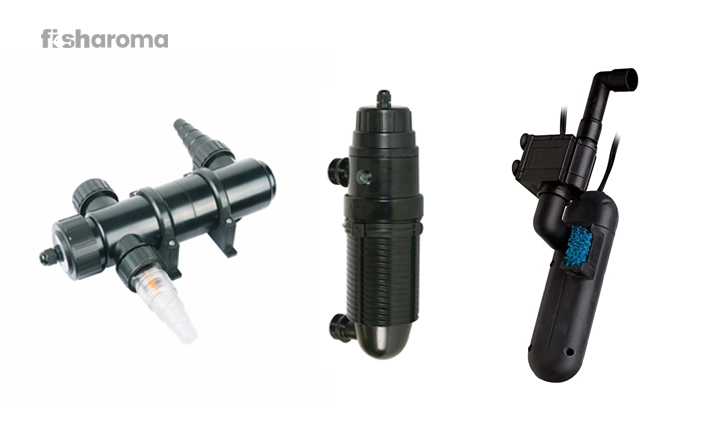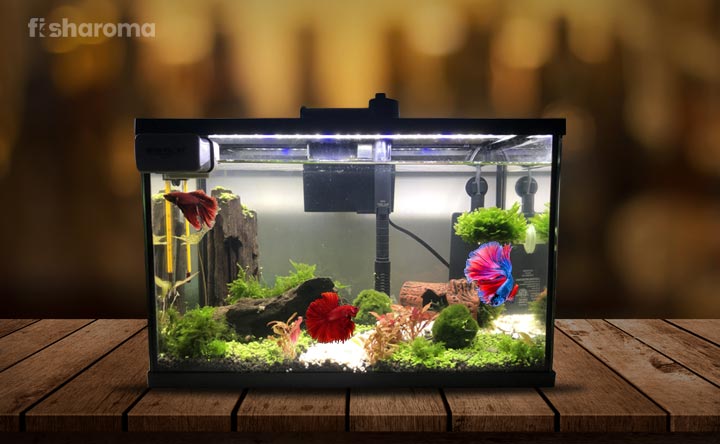Everything You Wanted to Know about Fish Fungus
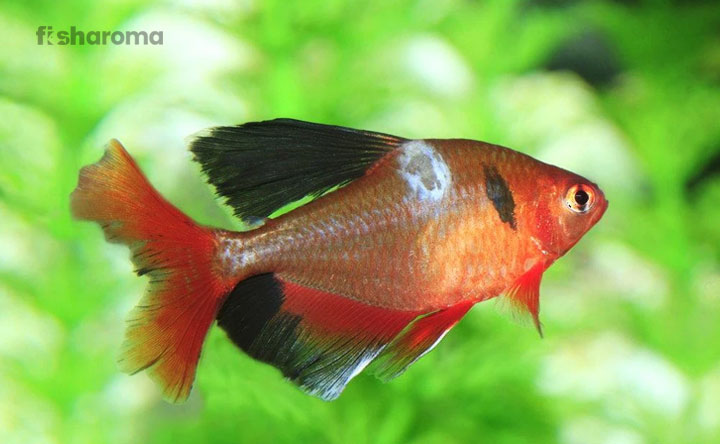
Fishkeeping is no child’s play. It requires complete dedication from your end. In your fishkeeping journey, you would come across a bunch of problems that will definitely rile you up into maybe thinking why you decided to have an aquarium. However, you need to practise patience and learn the joy your pet fish brings to you.
With proper knowledge and the right skill, you can tackle almost any fishkeeping challenge thrown at you. So, there’s no reason to panic at all. One such issue that you might experience is that of fish fungus. Today, we are going to learn about it in detail. From understanding what it is to what causes it, from the types of fungal diseases to the preventive measures and treatment you need to keep in mind, we will cover everything. So, read on to find more.
What is Fish Fungus?
Fungal diseases can take place in any aquarium and it doesn’t matter whether you are a beginner or experienced aquarist. To understand how they affect your pet fish, you first need to understand what they basically are.
Fungus or fungi are essentially a large group of organisms. The most common among them are mushroom, mould, and yeast. Don’t confuse them with plants. This is because unlike plants, they don’t photosynthesize and instead consume their food by absorbing dissolved molecules.
Studies show that there are more than 120,000 types of fungal species. While most of them are terrestrial, some are aquatic. Although fungi help in breaking down organic matter, which is pivotal in many nutrient cycles, they can cause harm to your pet fish.
Cause of Fish Fungus
You will be surprised to know that potential fungal spores are present almost all the time in your aquarium. But, they are unnoticed since they don’t produce any harmful effect.
The two primary causes of fungal diseases in an aquarium are as follows:
- When the tank water is of poor quality, it serves as the perfect breeding ground for the fungal spore to colonize.
- Unhealthy fish can bring about fungal infection in your tank since they are extremely vulnerable due to their weakened immune system. This is why it is always advised that you should quarantine our fish before introducing them to your main tank.
Please note that quarantining shouldn’t be restricted to your pet fish only. Any ornament, substrate, filter, etc. that you add to your tank needs to be quarantined as well. - When you are constantly disturbing your fish by scaring it off by knocking on the glass wall or when it doesn’t have adequate hiding space, chances of it suffering from stress are also high. And a stressed fish is more likely to contract fungal diseases.
- The same is true for fish with open wounds. If not treated immediately, they will be vulnerable to contracting fungal diseases.
The 5 Most Common Fish Fungal Diseases
As we stated earlier, there are many types of fungi, which of course means the kind of diseases that they carry are also different. Here are some of the most common fish fungal diseases that you might witness in your aquarium.
Ichthyosporidium
Ichthyosporidium affects the internal organs of a fish first before spreading on the outer surface. The two most severely affected organs are kidney and liver.
When your pet fish gets affected by this fish fungal disease, you will find them to be sluggish. They will often lose their balance. Their bellies would appear to be hollow after which they will develop sores and external cysts.
Unfortunately, by the time the disease spreads externally, it is too late for your fish to survive. This is why it is extremely important that you take note of behavioural symptoms of your fish frequently.
Treating this disease involves adding 1 per cent solution of chloromycetin or phenoxyethanol to their food. However, the chemicals can also put your fish to risk. It is suggested to quarantine the affected fish immediately so that you stop the fungus from spreading. Contacting your veterinarian should be done on an immediate basis.
Exophiala sp.
In the genus Exophiala, there are two species that cause issues – Exophiala psychrophile and Exophiala salmonis.
Both these fungi are identified by their branched hyphae that are irregular in width. Similar to the previous disease, this also affects the internal organs of your fish, especially the liver, kidney, and spleen.
After a certain period, the round white or yellow granulomas present on these organs and the posterior kidney becomes large in size. You would find your pet fish becoming lethargic and darker in colour. They will also swim in an abnormal manner. Research is still being carried as to how to treat this disease.
Egg Fungus
Your pet fish are not the only ones at danger of contracting fungal diseases. Fish eggs are vulnerable to getting infected by fish fungal diseases as well.
Therefore, if you have a breeding tank or if you are breeding your fish in your main aquarium, you need to pay special attention to the eggs. Saprolegnia and Achyla are the primary fungi that target the fish eggs. When your fish eggs get affected, you would see white fluffy patches on them.
Obviously, infertile and damaged eggs are the most vulnerable ones. Once these eggs get affected, it can easily spread to the healthy ones.
A positive aspect of most fish is that they separate the diseases eggs from the healthy ones. This is part of their egg-protection process. However, if the parents abandon their eggs, it is up to you to protect them.
Remove any infected or diseased eggs with the help of a forceps or needle or pipette. Discard them since they are not treatable.
Cotton-Wool Disease (Saprolegniasis)
Cotton-wool disease mostly affects freshwater and brackish water fish. It is caused by the fungi of the genus Saprolegnia, which is essentially a water mould.
When your pet fish contracts this fungal disease, you would see white or grey patches on their skin, especially around their gills. The patches usually have a fluffy appearance.
Although the patches start small, they soon enlarge and rapidly spread all over the body. One good thing about the patches is that they don’t penetrate deep enough into the tissues of your fish.
The colours of the lesions change with the increase in intensity. The white or grey patches turn into brown, green or red. Eventually, you would find your fish to be of an entirely different colour.
To treat this dreadful disease, the fluffy patches have to be scraped off. The reason why this disease is so common is that the fungi that cause it has the potential to survive a large temperature range of 32-95° F (0-35° C). In order to treat this, you need to use salt baths or use anti-fungal medications.
Achlya fungus can also cause similar symptom in your fish.
Gill Rot (Branchiomycosis)
Gill rot is caused by the genus Branchiomyces, in particular, Branchiomyces demigrans and Branchiomyces sanguinis. They infect pike/tench and carps respectively. Fortunately, pike, tench and carps are rarely seen in a home aquarium.
This disease results in mucus forming around the gills of your fish, making it difficult for them to breathe. This is why you would notice them heading to the water surface to gulp for air.
If not treated in time, the gills will rot and decay, eventually disappearing completely which can be deadly. Fungal spores can spread if tissues break off. Therefore, contact your veterinarian immediately.
Fish Fungus Diseases – Prevention
As someone rightfully said, prevention is better than cure, you must adhere to it as well. First of all, you need to maintain the hygiene of your tank environment.
Pathogens, especially fungi rarely thrive in a clean environment. So, you need to make sure that you perform regular water changes and take off leftover food items from your tank as soon as possible. Cleaning the interior tank walls by wiping it with a soft cloth dipped in lukewarm water is also recommended. Be sure not to use any soap or chemical-based products to clean.
Buy a water-testing kit and make sure the pH level, hardness, mineral level, and temperature, among others are as per the requirement of your fish. Perform the test at least 2-3 times a week.
Whenever you are introducing a new fish or any new décor item or substrate, be sure to quarantine them first. You never can be too safe. Once you feel the new fish is healthy enough in the quarantine tank and is not showing any signs of any disease, you can introduce it to the main tank.
Also, make sure your fish are not stressed. So, read about their compatibility, provide them with hiding spots and don’t disturb them by knocking on the glass walls.
Furthermore, always purchase fish from reputed vendors. You never know the wild-caught fish is healthy or not. So, be sure to follow this as well.
Fish Fungus Diseases – Treatment
First and foremost, you should always keep a close watch on the health and behavioural traits of your pet fish. Whenever they are displaying any odd behaviour, make sure to note it and inform your veterinarian about it.
We recommend spending a few minutes with your fish each day. All you need to do is to observe them. See whether they are eating properly or swimming properly or not. The sooner the symptoms are identified, the better it is for the health of your fish.
If you find any of the fish behaving differently, it is a good idea to separate and quarantine them. Treating them in isolation would help in stopping the spread of the disease.
There are many anti-fungal medications available these days, but don’t use them without speaking to a veterinarian first.
Instead of relying on internet hacks, speak to a veterinarian thoroughly and listen to their advice.
Your fish relies on you for their safety. So, be there for them all the time. Sometimes, you would see your pet fish taking time to acclimatize with the captive environment. Give them the necessary space. They might hide out completely or refuse to eat. Take a note of everything and research about the tank and dietary requirements of your pet fish and create a healthy environment for them.
Summary
As you have seen, fish fungus can be a dangerous event that can strike your aquarium if you are not taking proper preventive measures. So, be careful and keep the aforementioned guide in mind. Your pet fish is dependent on you for their good health and safety and it is completely your responsibility to help provide them with the same.
Fish fungus can have fatal results. Thus, acting on it before it even appears is the logical step. Maintain healthy practice and build a healthy environment for your pet fish.
Similar Fishkeeping Articles
If this article has interested you, we are certain the following would do as well.
- Types of Aquarium Algae – Your aquarium can be infested by a dozen different types of algae. Learn the differences between each of them and how to tackle them.
- Best Algae-eaters – Instead of relying on artificial and harmful chemicals, bring home natural algae-eaters to get rid of algae infestation in your aquarium.
- Aquarium Fish Diseases – Learn about the various types of diseases that commonly affect aquarium fish. Find out their causes and how you can treat them.




